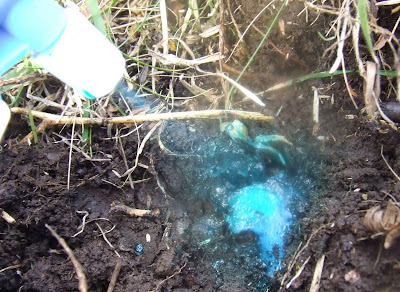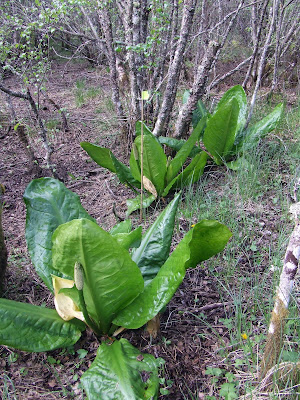Just to let you all know that it is
not just up north that INNS control is taking place and we are running an INNS project down here on the River Annan. We have been battling
the usual suspects of Japanese knotweed, Himalayan balsam and American mink.
Japanese knotweed has been treated using the
stem injection system and the impact on the plant in the first year has been
extremely encouraging. We aim to inject all visible stems that are large enough
and results can normally be seen after 2 weeks. We have managed to treat around
80% of the known knotweed in the catchment at least once using this method.
To control Himalayan balsam we
have been working with the Criminal Justice Service (CJS) who have provided
teams of unpaid workers (as they are now called) who have been cutting and hand
pulling balsam along the river. As part of the project 5 of the unpaid workers
received Lantra brushcutter training increasing their chances of future
employment. Unfortunately as with many places the Himalayan balsam population
has literally exploded this year covering 3 or 4 times as much of the catchment
as in the previous years.
American mink control has been
more successful and the number of mink in the upper catchment has been heavily
reduced. This is being backed up by the number of prints recorded on rafts as
well as anecdotal evidence from anglers. We hope to build more rafts and expand
the operation further downstream and into the tributaries of the Annan over the
next few months.































 Dry all equipment and clothing: some species can live for several days in damp conditions
Dry all equipment and clothing: some species can live for several days in damp conditions







